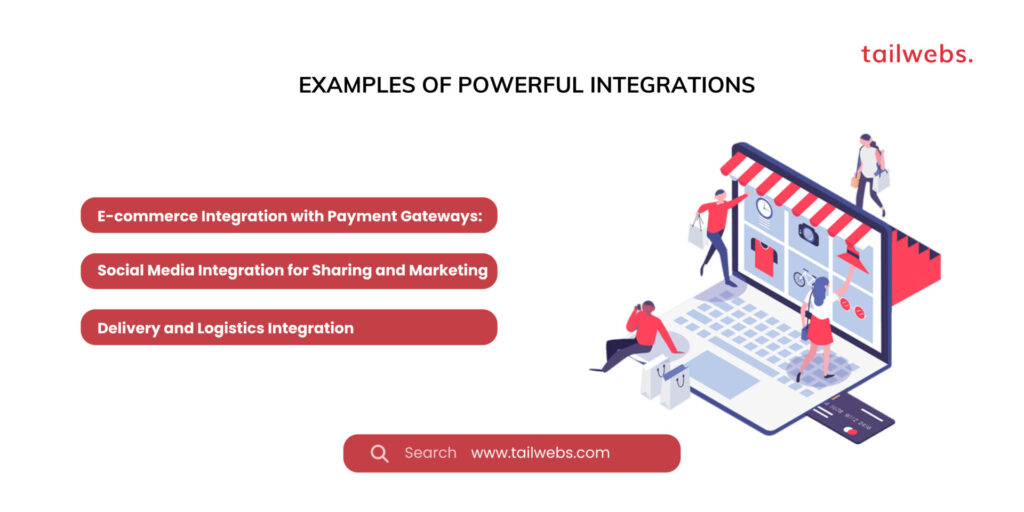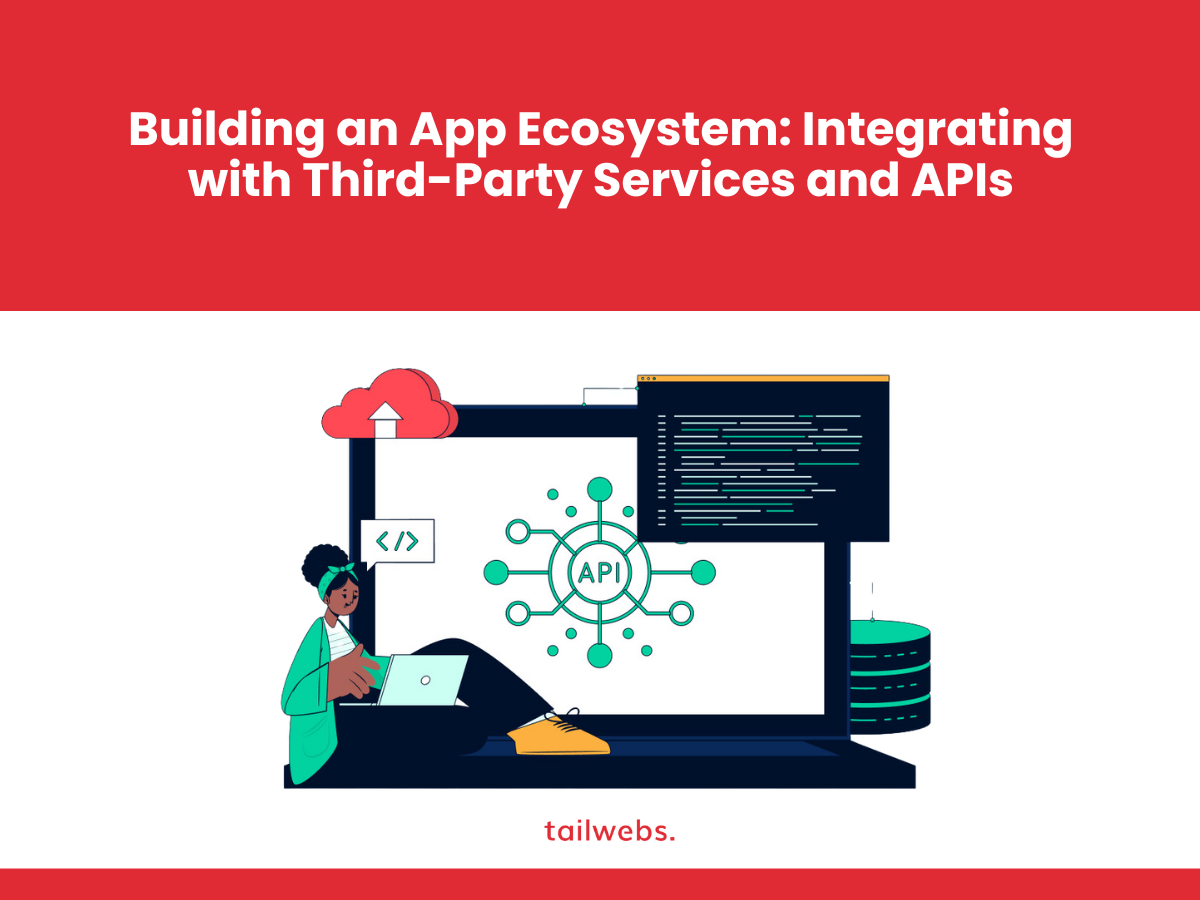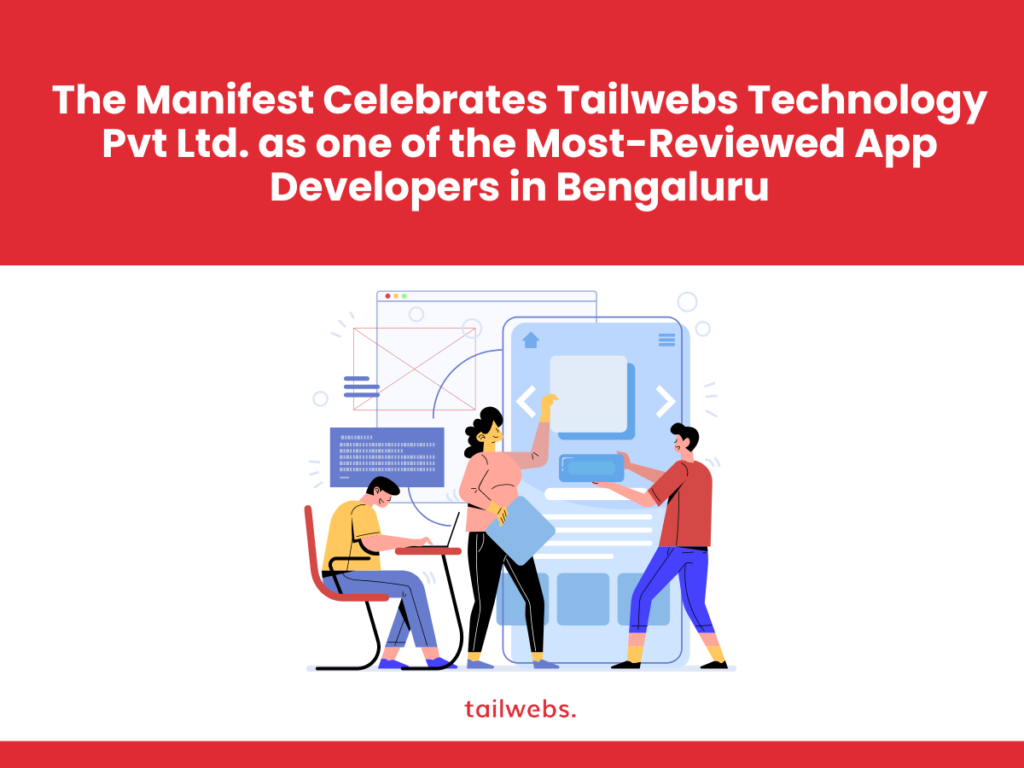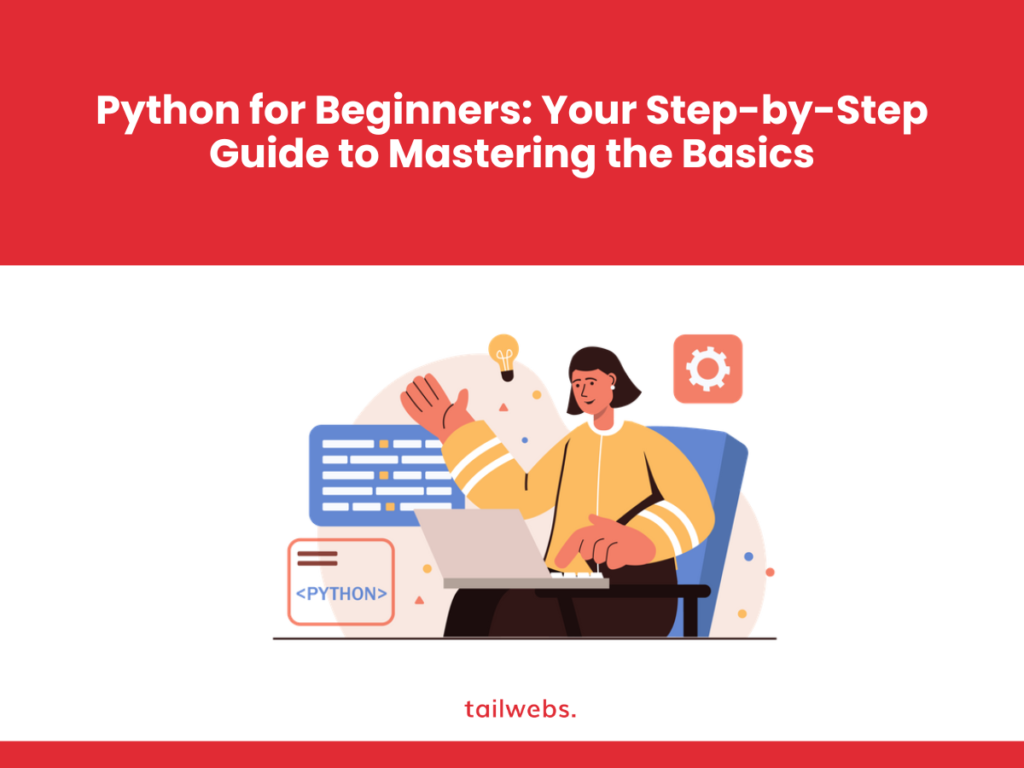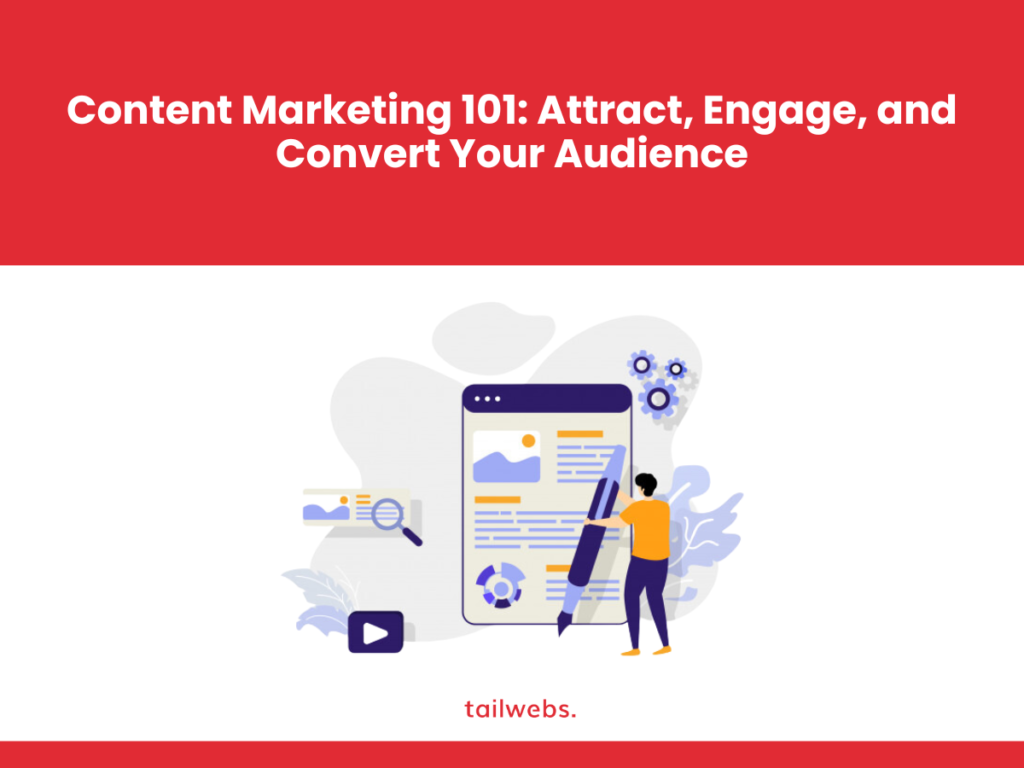In today’s app-driven world, users crave convenience and connectivity. They don’t want to juggle multiple siloed tools; they demand a seamless, integrated experience that caters to their diverse needs. This is where building an app ecosystem comes in – a strategic approach to weaving together your app with complementary third-party services and APIs to create a unified user experience.
Why Integrate? The Power of APIs and Third-Party Services
Think of APIs as bridges between apps. They allow different applications to share data and functionality, unlocking immense potential for:
Enhanced Functionality:
Extend your app’s capabilities beyond its core features by leveraging the expertise of specialised third-party services.
Streamlined User Experience:
Eliminate frustrating app switching and data silos by integrating common tasks like payments, maps, or social media sharing.
Increased User Engagement:
Offer personalised experiences with tailored recommendations, data-driven insights, and seamless workflows.
Faster Development:
Reduce development time and costs by utilising pre-built functionalities instead of reinventing the wheel.
Scalability and Innovation:
Tap into the constant evolution of the developer community and leverage new services as they emerge.
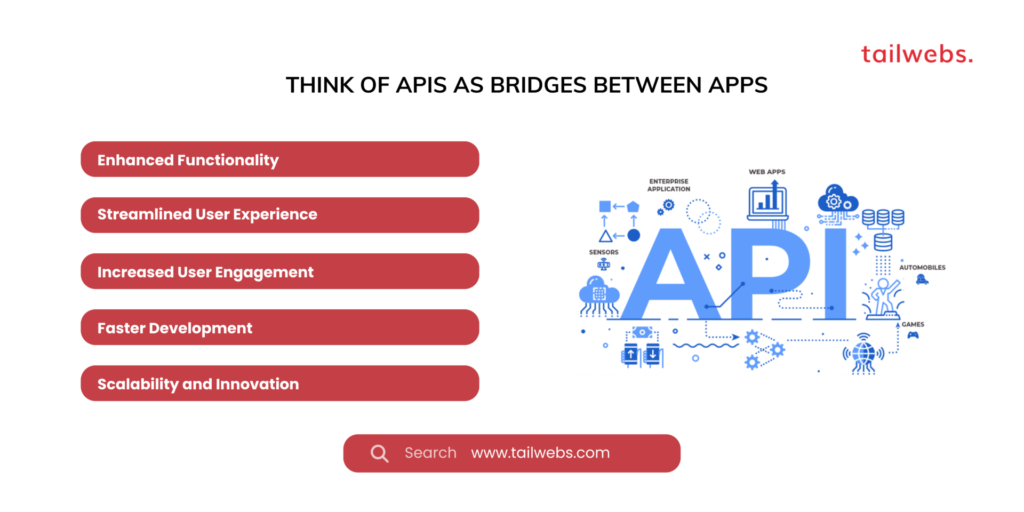
The statistics speak for themselves:
- The global API market is expected to reach USD 1.86 trillion by 2023, growing at a CAGR of 19.5%.
- 78% of developers use APIs to build new applications.
- 84% of businesses say API integration is essential for their digital strategy.
- Building Your App Ecosystem: A Step-by-Step Guide
Ready to join the app ecosystem revolution? Here’s a roadmap to guide you:
1. Define Your Goals:
- What problem are you trying to solve by integrating with other services?
- What value will it add to your users’ experience?
- Be clear about your target audience and their needs.
2. Identify Relevant Services and APIs:
- Research third-party services that complement your app’s core functionality.
- Explore popular API marketplaces like ProgrammableWeb or RapidAPI.
Consider factors like reliability, security, documentation quality, and developer support.
3. Understand the API Documentation:
- Dive deep into the API documentation to understand its functionalities, data formats, authentication methods, and error handling.
- Don’t hesitate to reach out to the API provider for clarification or support.
4. Develop and Test the Integration:
- Choose the appropriate integration method (SDK, REST API, etc.) based on your technical expertise and project requirements.
- Develop the code to connect your app with the third-party service.
- Thoroughly test the integration for functionality, security, and user experience.
5. Monitor and Maintain:
- Keep an eye on API updates and changes to ensure compatibility.
- Monitor usage patterns and gather user feedback to continuously improve the integration.
- Be prepared to adapt and evolve your ecosystem as new technologies and services emerge.
- Essential Tips for Success:
Prioritise Security:
Data security is paramount. Choose reputable API providers with robust security measures in place.
Focus on User Experience:
Ensure seamless integration that feels natural and intuitive for your users.
Document Everything:
Maintain clear documentation for your developers and future reference.
Communicate with Users: Keep your users informed about new integrations and their benefits.
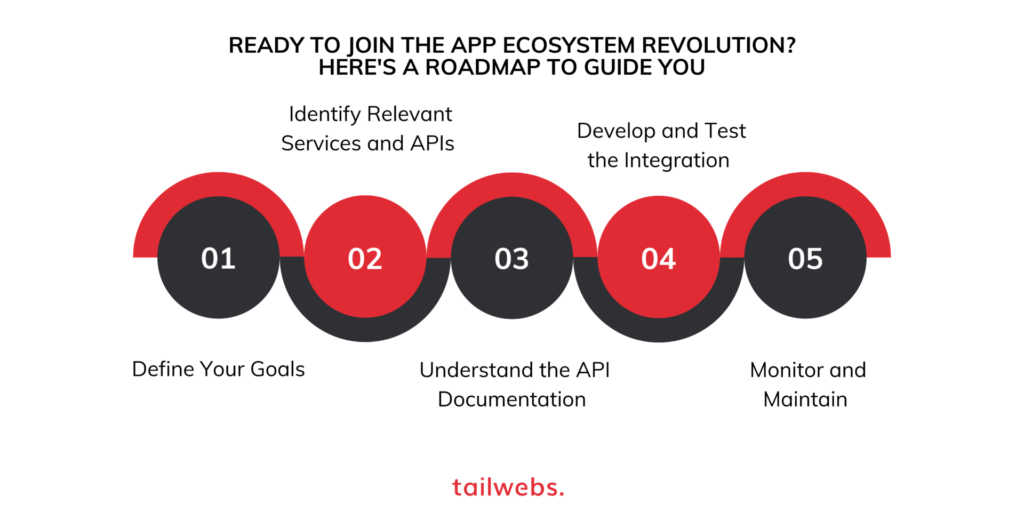
Inspiring Examples of App Ecosystems:
- Uber: Integrates with Google Maps for navigation, PayPal for payments, and Spotify for in-ride entertainment.
- Airbnb: Connects hosts and guests worldwide, leveraging Google Translate for communication and Stripe for secure transactions.
- Slack: Offers a plethora of integrations with productivity tools like Trello, Zoom, and Google Drive, creating a collaborative workspace.
- Building an app ecosystem is not just about adding features; it’s about creating a holistic user experience that delights and engages. By strategically integrating with the right third-party services and APIs, you can unlock new possibilities, stay ahead of the curve, and build a thriving app community.
Remember, a successful app ecosystem is a living, breathing entity that evolves with your users and the ever-changing tech landscape. Embrace the power of integration, and watch your app soar to new heights!
Building an App Ecosystem: Unleashing Synergies with Third-Party APIs
In our previous post, we explored the concept of building an app ecosystem and its potential to enhance functionality, user experience, and your app’s overall success. Now, let’s delve deeper into the practical aspects of integrating with third-party services and APIs.
Choosing the Right Tools for the Job:
With a plethora of APIs and services available, selecting the right ones can be overwhelming. Here’s a framework to guide your decision-making:
1. Understand Your Users’ Needs:
- What tools and services do your users already rely on?
- What pain points can integrations address in their workflow?
- Analyse user feedback and app usage data to identify potential integration candidates.
2. Research and Compare Potential Partners:
Explore API marketplaces like Amazon Web Services Marketplace, RapidAPI, or Apiary.
Evaluate factors like:
- Functionality: Does the API offer the capabilities you need?
- Ease of Integration: Is the API well-documented with readily available SDKs or libraries?
- Reliability and Performance: Does the API provider have a strong track record of uptime and performance?
- Security: Does the API employ robust security measures to protect user data?
- Cost: Does the pricing model align with your budget and expected usage?
3. Prioritise Seamless Integration:
Focus on APIs that offer smooth user experiences. Look for features like:
- Single Sign-On (SSO): Allow users to log in once and access both your app and the integrated service seamlessly.
- Embedded User Interface (UI): Integrate the third-party service’s UI within your app for a unified look and feel.
- Webhooks and Real-time Data Updates: Ensure data flows effortlessly between your app and the service for a dynamic and responsive experience.
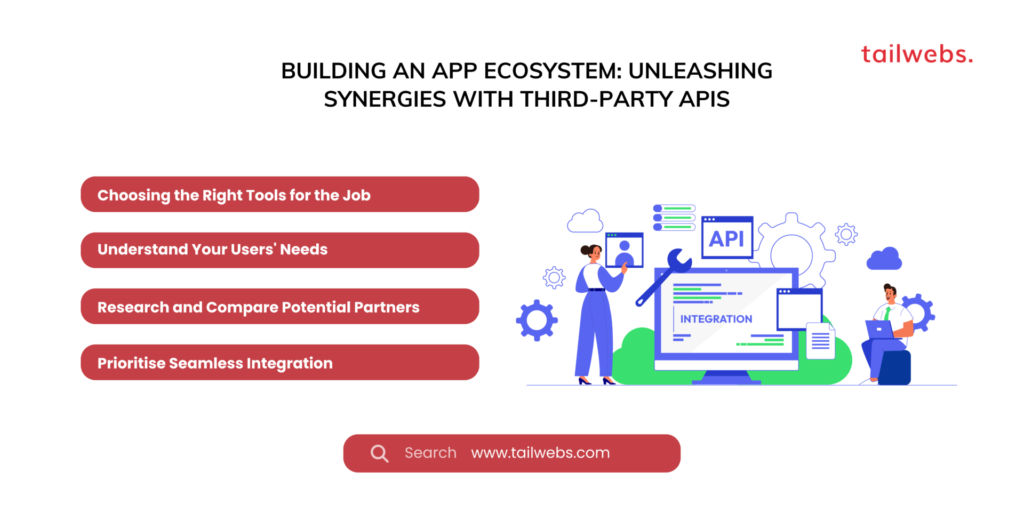
Examples of Powerful Integrations:
E-commerce Integration with Payment Gateways:
Streamline the checkout process by integrating with secure payment gateways like Stripe or PayPal, increasing conversion rates and customer satisfaction.
Social Media Integration for Sharing and Marketing:
Leverage the reach of social media platforms by allowing users to share content or log in with their social media accounts. This can boost brand awareness and user engagement.
Delivery and Logistics Integration:
Partner with delivery services like DoorDash or UberEats to offer convenient delivery options, enhancing customer satisfaction and expanding your reach.
Remember, successful integrations are not just about adding features; they’re about creating synergies that benefit both your app and your users.
